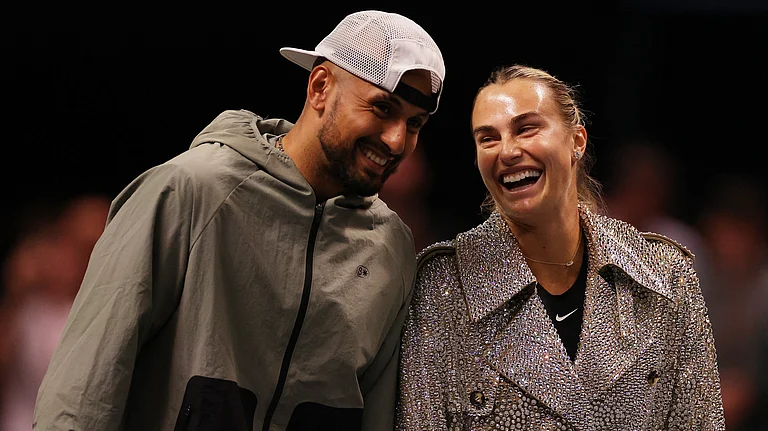It’s a difficult time for the fashion industry as they navigate through the troubled waters. The revenues of the apparel business have shrunk significantly due to the Covid-19 pandemic. The business of India’s local designers who depend on retail stores for their sales has come to a standstill. Sales have come to a halt and weavers and craftsmen are facing wage loss.
The Covid-19 pandemic has created a crisis across all the businesses barring those of essential commodities. Indian handloom sector has been picking up in the “slow fashion” market internationally, but with the coronavirus uncertainty no overseas orders will be forthcoming as it has disrupted the entire supply chain of the textile sector.
Shailesh Chaturvedi, Chief Executive Officer and Managing Director, Tommy Hilfiger, Calvin Klein India, says, “Businesses would have to take care of both people and cash flows, at least until June.”
As per reports, India’s largest fashion body, the Fashion Design Council of India (FDCI) cancelled its bi-annual ready-to-wear fashion week in early March. Though the organisation returned payments from the participating designers and sponsors but did not get any refund for the venue where the fashion show was supposed to take place.
Paromita Banerjee, a fashion designer from Kolkata says, “It is true that fashion does not fall under the category of essential commodities, but at the same time, clothing is one of the highest revenue generators since we need clothing for various occasions, all the time. But having said that, cash flow will be low now and there will be less disposable income to spend on non-essential or 'fancy' items of clothing.”
Banerjee says the FDCI has created a Covid-19 fund to help young designers to combat and tide away this time to help them pay salaries, overheads etc. There has been support coming from Lakme Fashion Week organisers IMG Reliance too.
“In my small little way, I am glad that my business and brand, for the past ten years, has been concentrating on slow fashion; fashion that has passed through the hand of multiple craftsmen before it finally reaches the wearer. Fashion that has stood the test of time and has become classics over time,” says Banerjee.
However, designers believe what will definitely survive these tough times is the clothing range that falls under the range of sustainable and classic fashion. Since customers might not have extra cash at their disposal, they will be compelled to shop more for items that last longer, clothes that they can reuse and those that become classics in the wardrobe.
Sunita Shankar, a fashion designer from Delhi says, “There is a huge loss of orders for a season due to cancellation of many big events. Existing orders stand cancelled or delayed, payments delayed or deferred. With the shops and boutiques being closed there have been no sales. There is no cash flow and there is a big liquidity crunch.”
The designers are facing additional pressure of paying salaries to employees and craftsmen. There are no funds to resume manufacturing, trading and sales, and cash flow is needed for raw materials, utility bills and taxes.
The handloom and the handicraft sector have been the hardest hit. With the lockdown, the weaving and the crafts community are left with uncertainties and anxieties. The abrupt halt to their economic activities has threatened their livelihood.
Shankar says, “Financial assistance is necessary, but it is also the time to think differently while dealing with the situation and preparing for the future. Though financial aid is essential it may be suggested to purchase stocked merchandise from craftspeople and weavers in order to motivate them to produce more. The government could initiate and support the sales of products and textiles through promotional campaigns.
Rahul Mehta, Chief Mentor of the Clothing Manufacturer Association of India says, “Almost 80 percent of the entire garment industry falls under the micro sector. Therefore, the impact is more because our members do not have the kind of resources to see them through the coming months.”
The Indian fashion and textile industry provide livelihood to many people—weavers, dyers, tailors, designers, exporters, raw material producers. And the pandemic has disrupted the entire chain. Banerjee says, “My only wish from the govt, if I put it simply, is to help in combat this scenario by giving us certain leeway into things that are under their control. And we will manage the rest.”
Gunjan Jain, textile designer of label ‘Vriksh’ says, “Orders have been canceled, there is blocked inventory of stock that we are unable to sell due to market collapse leading us to exhaustion of running capital. Small enterprises are forced to shut down, leading to debt. Handloom weavers and artisans have the advantage of working from home but there is no raw material available for them to continue work.”
Mehta says that it has been estimated that if no assistance comes from the government by way of wage subsidy or by way of revival package, there will be a loss of almost one crore jobs in the entire textile chain. He says, “I am not only referring to the entire garment industry because if the garment industry closes down then it will be the end of the fabric supplier, the zipper, tags and label industry.”
However, on a positive note, Shankar mentions, “The present interruption has given us the opportunity to reflect, rethink and recalibrate both our lifestyle and work.” This pause should ideally be promoted as incubation period where self-sustaining communities and designers encourage ‘Handmade in India’, ‘Make in India’, ‘Buy Indian and promote Indian’. This can be an opportunity to harness and enhance the languishing skill, knowledge and production base of both handloom and handicraft sector. Shankar further adds, “The world post-Covid will be different where the shift will be to need and functional-based garments as many would be working from home.” With the world becoming more and more digitalised, the handcrafted products gain both in value and in currency. Designers could work on designs and innovate within the constraints of the present scenario with both empathy and sympathy for both craftspeople and consumers. A new range of textiles, clothes and crafted products could pave the future and in sync with the changing lifestyle. “Need is to build up synergies between craftspeople, weavers and designers, innovating within constraints working on an affordable range of clothing and products,” says Shankar.
Designers feel that the business model needs to change because the world will probably change after the pandemic gets over. One important lesson learned is that the true wealth of a nation is its people and their wellbeing is instrumental in the growth and development of the country.


























